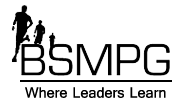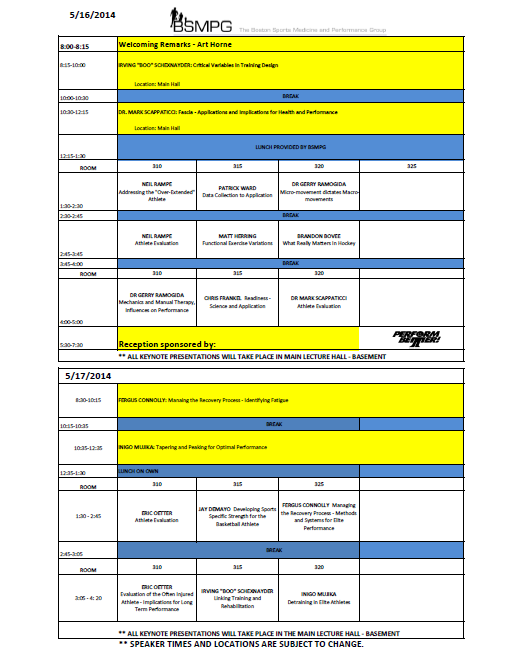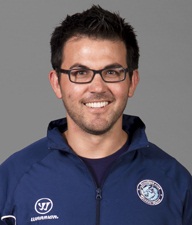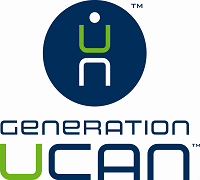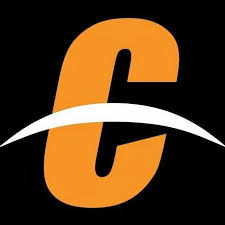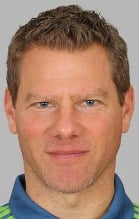Adaptation of the TMG parameters on the knee musculature in female professional volleyball players after four month of specific training
Molina, J.J.1, Diez-Vega, I.1, Fernández-del-Valle, M.2, Rodríguez-Matoso, D.3, Rodríguez-Ruiz, D.3
1 European University of Madrid, Spain.
2 Texas Tech University, USA.
3 Laboratory of Analysis and Planification of Sport Training (LAPED – ULPGC), Spain.
INTRODUCTION
Efficiency in volleyball is closely related to the ability to perform displacements or jump. Therefore, an accurate, individualized, and localized evaluation of the muscles frequently involved in volleyball practice is needed (1,2). The aim of this study was to analyze the adaptations of the TMG parameters on the knee musculature in professional volleyball players.
METHODS
A total of 16 players professional volleyball players aged 20.32 ± 1.68 (body weight: 67.75 ± 9.13; height: 178.26 ± 7.12; BMI: 21.41 ± 1.75) from two Spanish Superleague teams were recruited. Vastus Medialis (VM), Rectus Femoris (RF), Vastus Lateralis (VL) and Biceps Femoris (BF) were assessed using TMG. contraction time (Tc), maximal displacement of muscle belly (Dm), delay time (Td), relaxation time (Tr) and sustantain time (Ts) were obtained for each muscle before season started and four months after training.
RESULTS
Results showed significant changes on every muscle assessed: Δ%BF was lower after training for all parameters [Tr and Dm (p≤0.05) in left leg]. RF showed different responses for each limb: lower values for right and greater in left, except Tc that was lower for both limbs [Ts and Tc (p≤0.05) in left leg]. Ts in VM was greater in both limbs (p≤0.05) and Tr also. Δ%VL decreased after training for all parameters except Ts for both right and left limbs. Differences were as well found for Tc and Td at the right limb and Dm on both limbs.
CONCLUSION
TMG results shown that adaptations to training are achieved differently on every muscle assessed (1) probably due to the specific technical needs of volleyball. These results reinforce the role of TMG as an equipment enough sensitive to detect changes produced by training in professional volleyball players (2). However, further research is needed in order to determine other aspects that could allow us to compare the results obtained (TMG) in this study in professional female volleyball players.
REFERENCES
- Díez, I., Rodríguez-Matoso, D., Fernández-del Valle, M., Sagastume, R., Estevez, R., Molina, J.J., Rodríguez-Ruiz, D. (2011) Diferencias funcionales en la musculatura de la rodilla en jugadoras profesionales de voleibol. Kronos. La revista científica de actividad física y deporte. 10(2): 55-62.
- Rodríguez-Ruiz, D., Rodríguez-Matoso, D., Fernández del Valle, M., Díez, I., Sagastume, R., Molina, J.J. (2012): Uso de la Tensiomiografía como herramienta de control del proceso de entrenamiento, en Martínez de Aldama, I, Cayero R. & Calleja, J. et al. (Eds.) Investigación e innovación en el deporte (pp: 753-758). Editado por Paidotribo. Badalona (España).
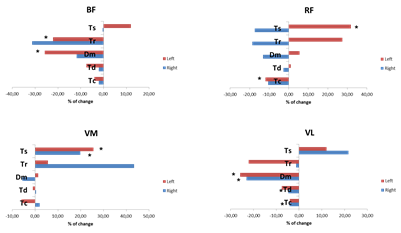
Figure 1: Δ% change on all TMG parameters of each muscle assessed after training
Visit and learn more from the TMG team at the 2014 BSMPG Summer Seminar - May 16 & 17th




